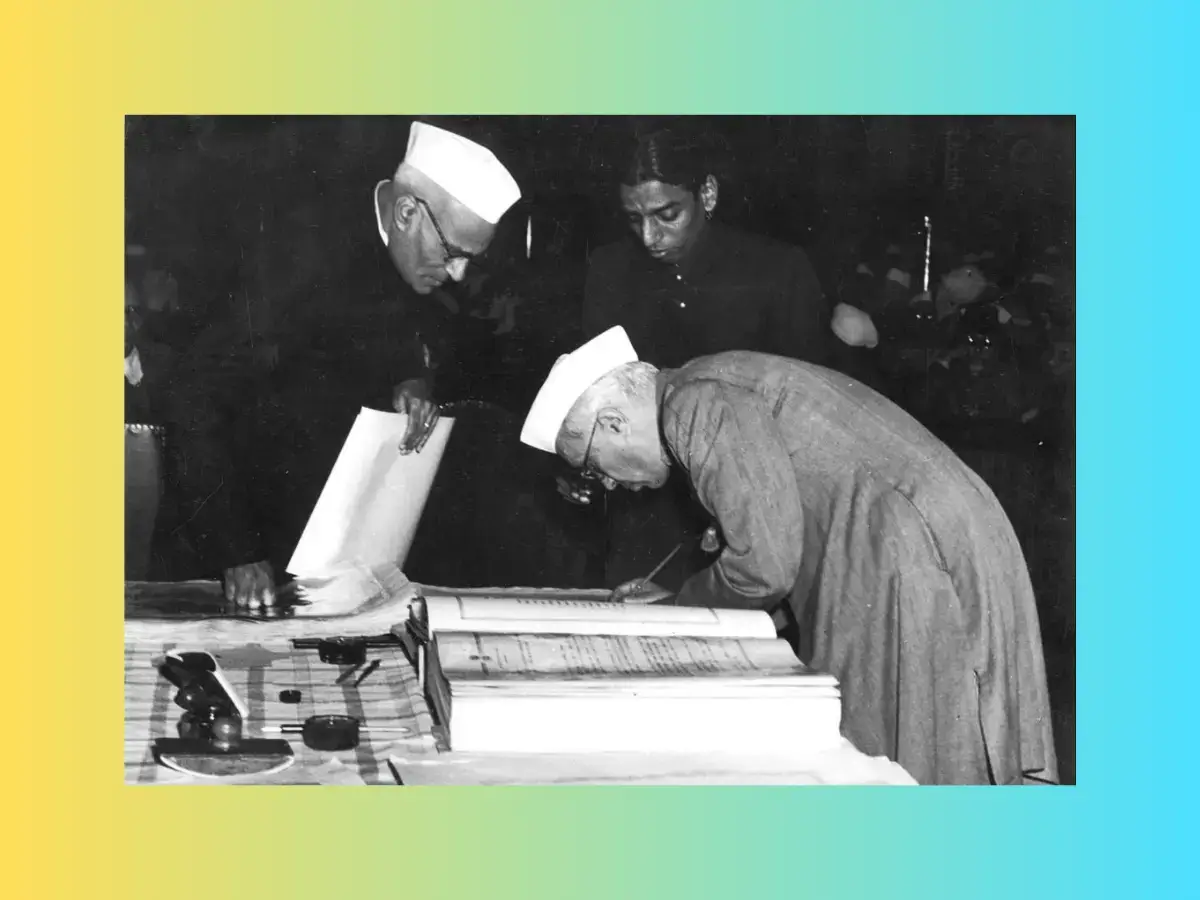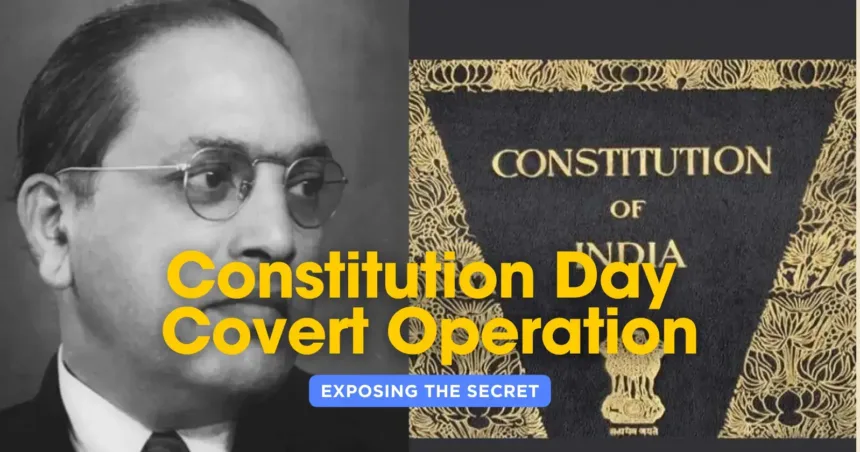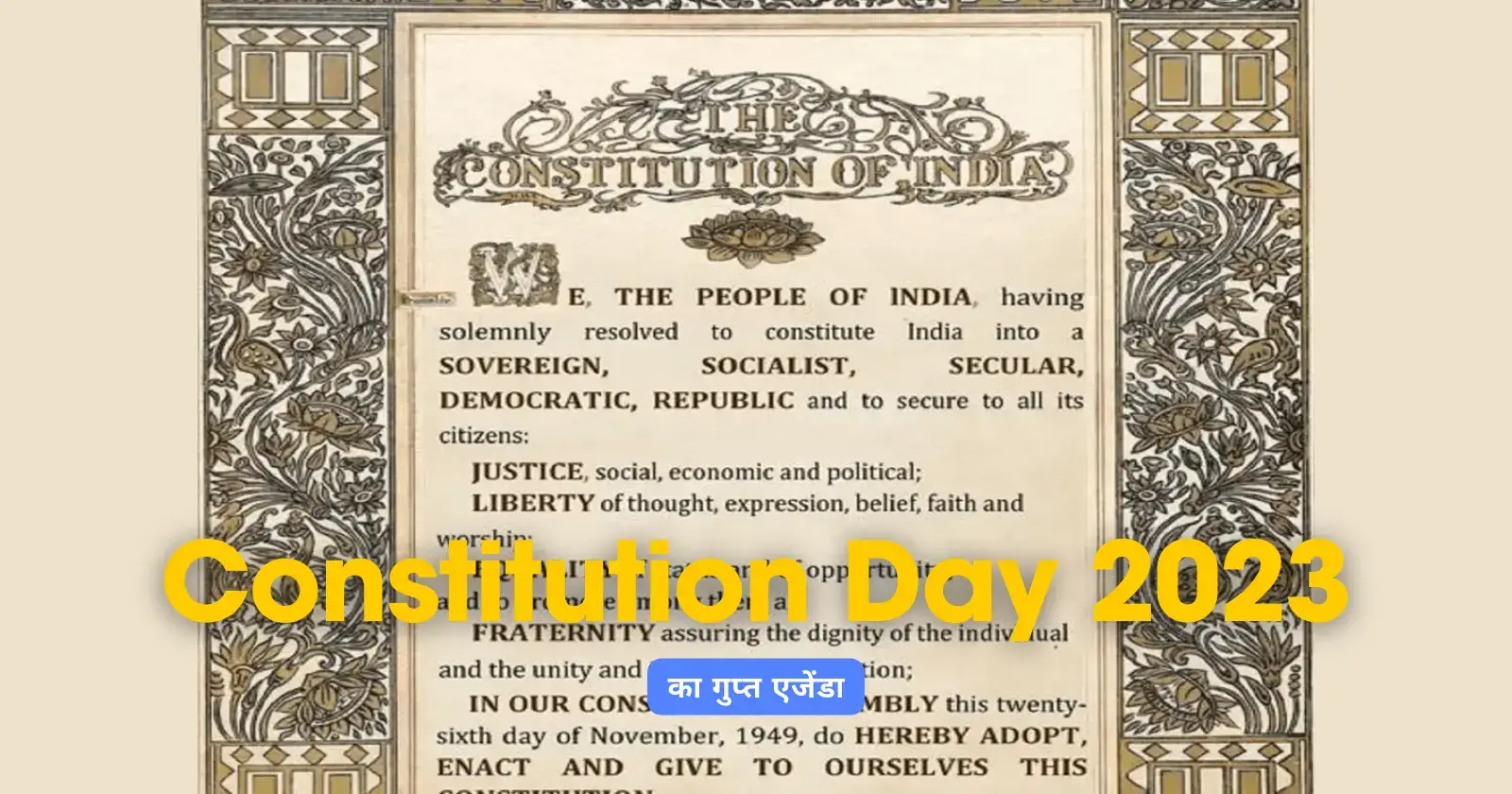Introduction
On November 26 every year, India observes Constitution Day, also known as ‘Samvidhan Divas,’ to honor the adoption of the fundamental principles that govern the nation. This significant day holds historical importance as it marks the adoption of the Constitution of India. Let’s delve into the history, significance, and interesting facts surrounding Constitution Day.
History and Significance

After gaining independence, the Constituent Assembly of India adopted the present-day Constitution on November 26, 1949. The Constitution came into effect on January 26, 1950, laying the foundation for the country’s governance.
Also Read: Constitution Day 2023 का गुप्त एजेंडा: भारतीय कानूनों के पीछे छिपी सच्चाइयों का खुलासा
The Constituent Assembly, consisting of 299 members elected by the provincial assembly, played a pivotal role. The drafting committee, led by Bhimrao Ramji Ambedkar and comprising notable figures like Benegal Narsing Rau, Alladi Krishnaswami Ayyar, N Gopalaswami, KM Munshi, Mohammad Saadulla, BL Mitter, and DP Khaitan, worked tirelessly to finalize the draft.
In 2015, on the 125th birth anniversary of Bhimrao Ramji Ambedkar, the Union government officially declared November 26 as Constitution Day. The objective was to inspire people to embrace and uphold constitutional values in their lives.
Interesting Facts
- World’s Longest Constitution: The Indian Constitution holds the title of the world’s longest written constitution, comprising 448 articles, 12 schedules, and 105 amendments.
- Father of the Indian Constitution: Bhimrao Ramji Ambedkar, often referred to as the ‘Father of the Indian Constitution,’ chaired the drafting committee and played a pivotal role in shaping the Constitution.
- Federal Structure: The Indian Constitution establishes a federal structure, creating a democratic government with three branches: the legislature, executive, and judiciary.
- Fundamental Rights: Ensuring fundamental rights to all citizens, including freedom of speech, equality before the law, and the right to life and personal liberty, is a cornerstone of the Constitution.
- Parliamentary Form of Government: The Constitution provides for a parliamentary form of government, with the Prime Minister as the head of the government and the President as the head of state.
- Official Languages: Recognizing linguistic diversity, the Constitution acknowledges 22 languages as official languages of India, with Hindi and English designated as the official languages of the Union.
Conclusion
Constitution Day is not merely a commemoration of a legal document but a celebration of India’s democratic ethos. It reminds us of the principles that guide our nation and encourages us to actively participate in upholding these values.
FAQs
1. Why is Constitution Day celebrated on November 26?
Constitution Day is celebrated on November 26 to mark the adoption of the Constitution of India by the Constituent Assembly in 1949.
2. Who chaired the drafting committee of the Indian Constitution?
Bhimrao Ramji Ambedkar chaired the drafting committee of the Indian Constitution.
3. How many languages are recognized as official languages in the Indian Constitution?
The Indian Constitution recognizes 22 languages as official languages, with Hindi and English as the official languages of the Union.
4. What is the significance of Constitution Day?
Constitution Day holds significance as it encourages people to follow constitutional values and principles in their lives.
5. Which document is the world’s longest written constitution?
The Indian Constitution is the world’s longest written constitution, comprising 448 articles, 12 schedules, and 105 amendments.




